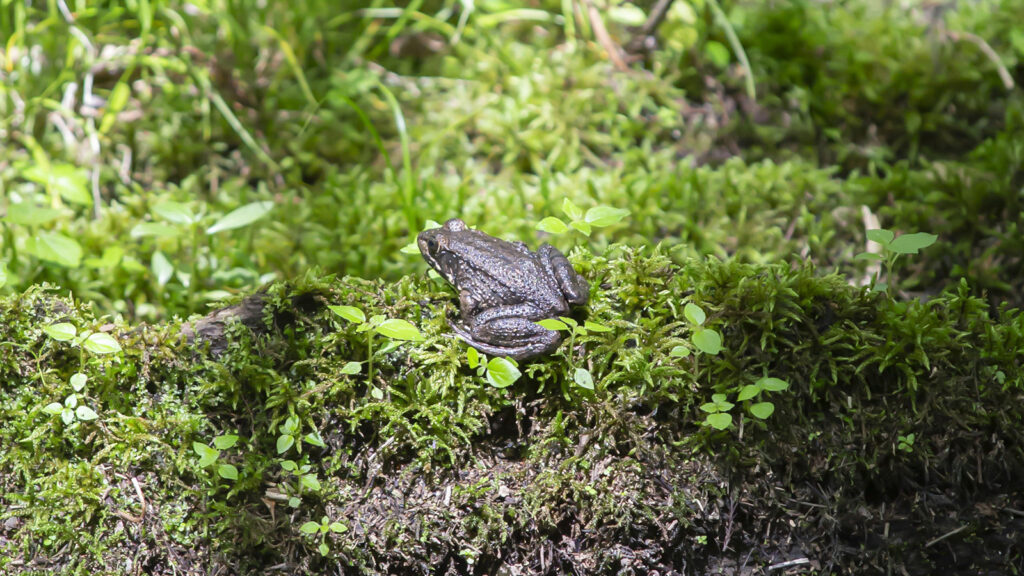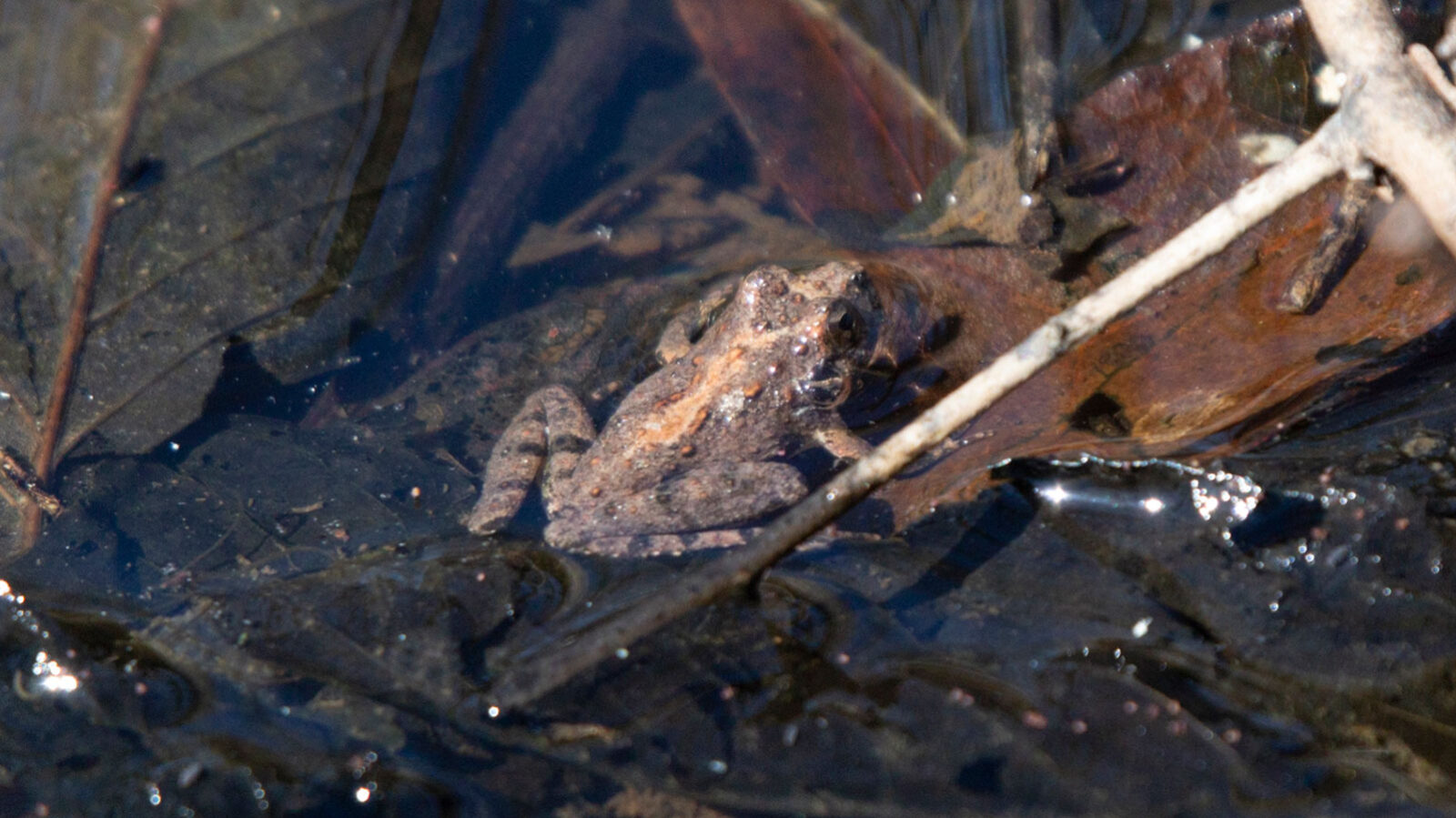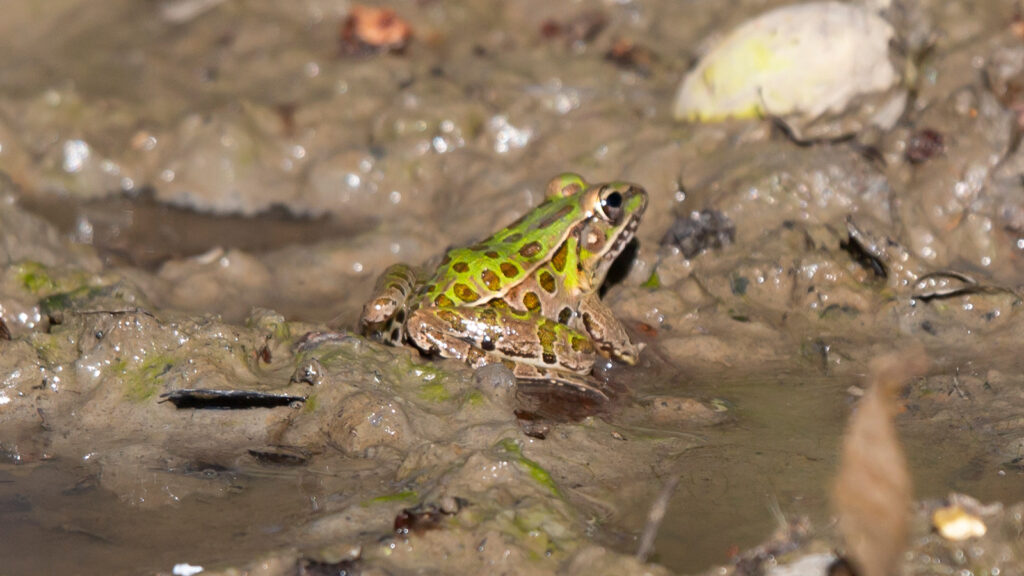At A Glance
More than 30 species of North Louisiana amphibians swim, hop, and glide through our swamps, lakes, creeks, and other waterways. North Louisiana is home to species from two amphibian orders: Anura (frogs and toads) and Caudata (salamanders). Frogs and toads outnumber salamanders here. Twenty species hop around our ponds, lakes, swamps, roads, and yards; sixteen species of newts and other small salamanders roam our creeks and the edges of our wetlands, hiding and foraging under rocks and logs in stagnant and slow-moving water. If you look in the right places, you can even find a few species of sirens and amphiuma, large salamanders, in North Louisiana’s many waterways.
Invasive Species
Species of Toads
By The Numbers
Learn more about amphibians in North Louisiana.
Species of Amphibians
Species of Salamanders
Species of Frogs
Frogs

Blanchard's Cricket Frogs
Learn More.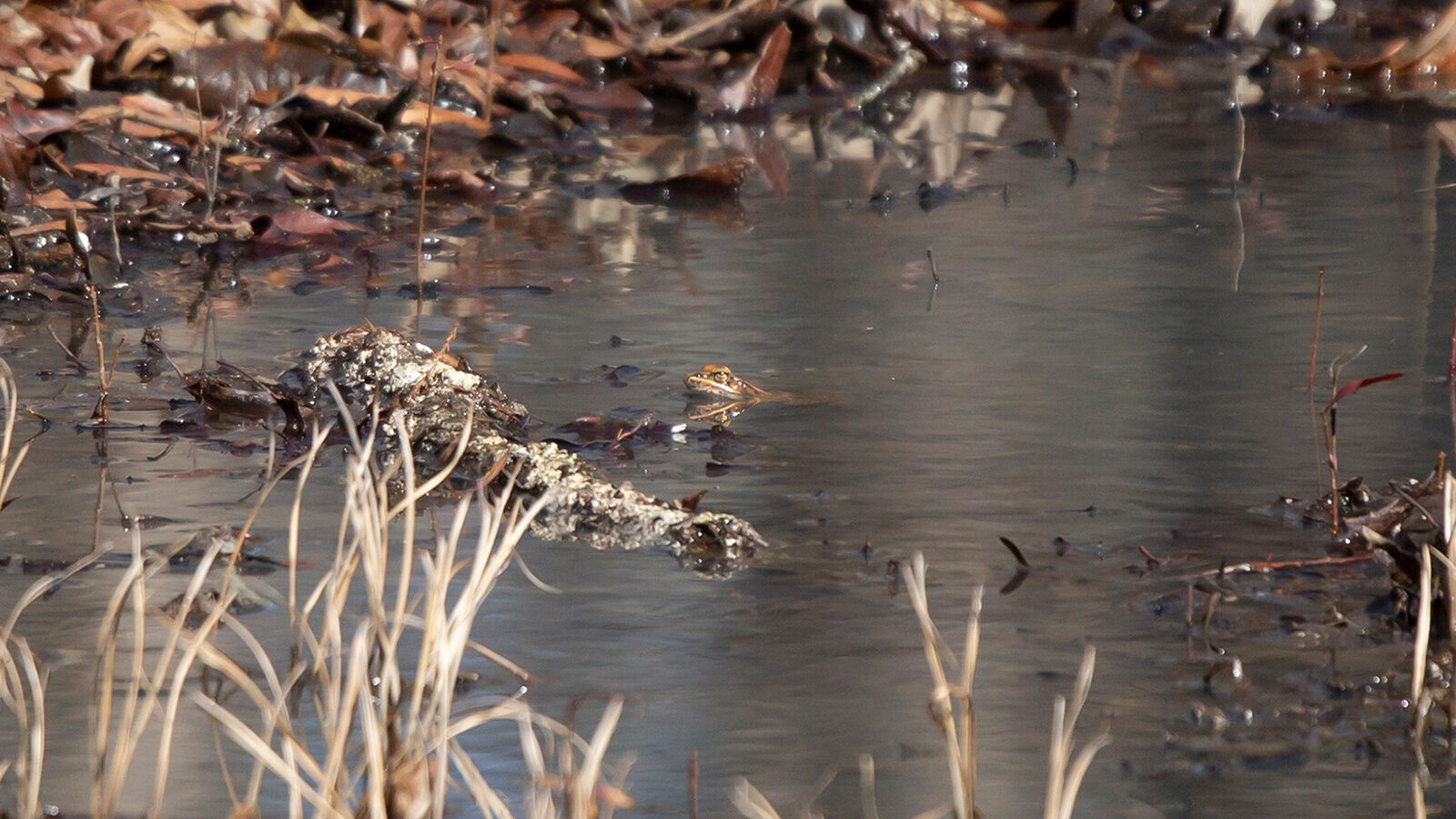
Pickerel Frogs
Learn MoreToads

American Toads
Learn More.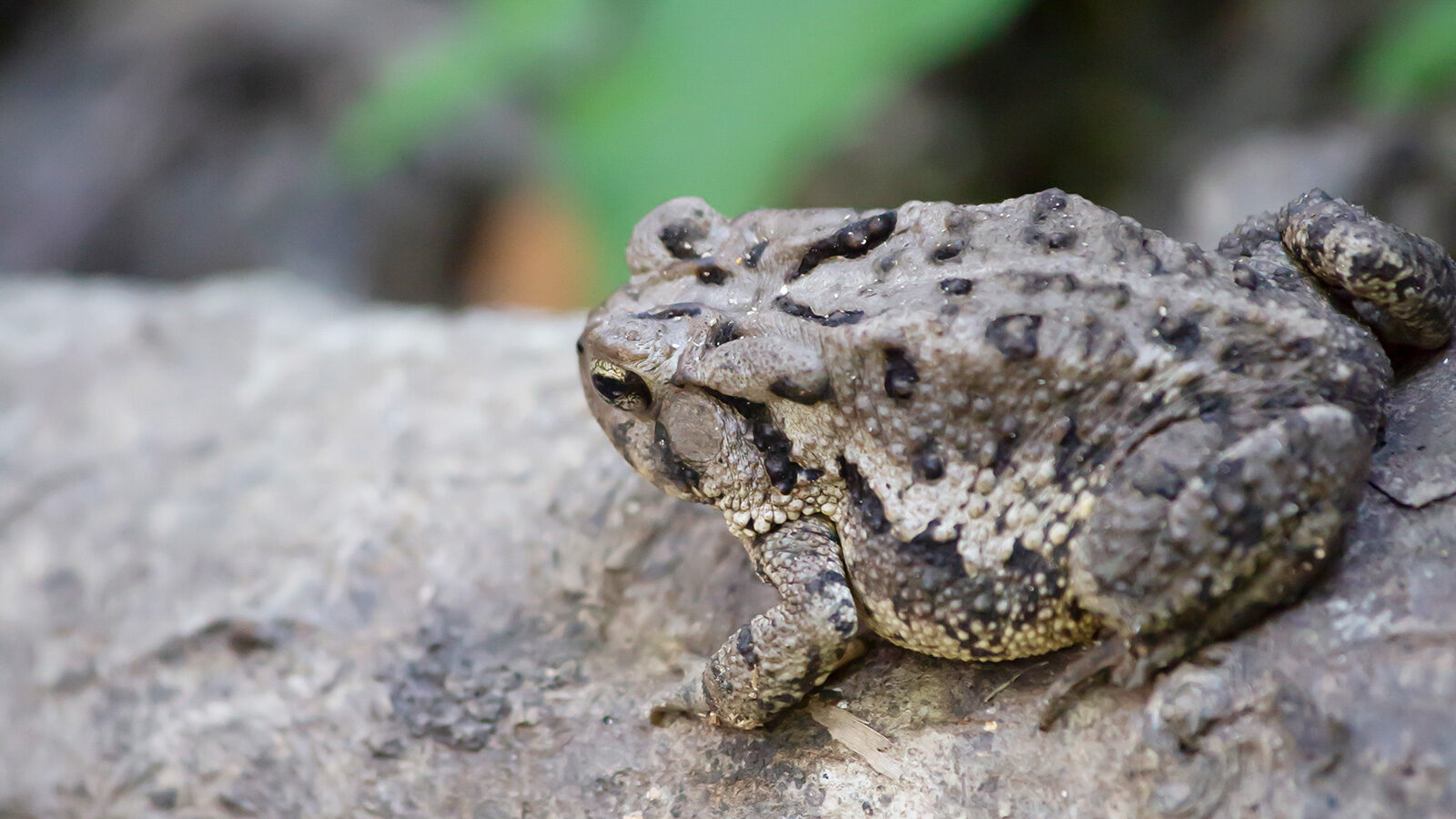
Fowler's Toads
Learn More.Amphibians get a bad rap from bipedal mammals (aka humans) who capture them, trade them as pets, and spread misinformation about them. Frogs and toads don’t bounce around spreading warty plagues, y’all…although they will pee on your hand if you pick them up. So, you know, maybe observe them from a respectful distance.
Believe it or not, amphibians suffer even worse consequences than pee-stained hands when you pick them up. If you’re handling amphibians, you’re more dangerous than the entire swamp. When you handle amphibians, you transfer your bacteria to them, which can make them lethargic or sick. The skin on your hands also draws moisture from the amphibian’s skin, which is especially dangerous to salamanders who rely on their moist skin to help them breathe. So, also, maybe don’t go around collecting eyes from newts. You might dry out their skin as you steal their retinas.
Despite their bad rap, amphibians aren’t dangerous to humans or pets except when we handle them. Like other wild animals, amphibians carry their own bacteria, parasites, and, in the case of the cane toad, toxic secretions. If a pet eats a cane toad, the pet will get toad poisoning from its toxic secretions.
Today’s amphibians are small creatures who hide in water and foliage, the largest of which are the Japanese giant salamanders. These salamanders grow up to six feet long and weigh more than 140 pounds. The first amphibian (that we have records for) waddled onto land more than 300 million years ago in the Devonian Period of the Paleozoic Era. Elginerpeton pancheni was roughly the size of the modern South China giant salamander, which grows up to five feet long and weighs more than 100 pounds. From that point, prehistoric amphibians evolved to be larger and more dangerous.
Amphibians were the dominant land vertebrates by the Carboniferous Period in the late Paleozoic Era, also known as the Age of Amphibians for the massive size of these top predators, like the 15-foot 200-pound Eogyrinus, that ruled the world’s food chain. USA’s old Up All Night series aired multiple documentaries on the era, and we watched them all. During their heyday, large amphibians roamed the earth, spawning new species of amphibians, including those that became reptiles’ ancestors. Many of these large amphibians died during the mass Permian extinction, a series of events at the end of the Paleozoic Era during which nearly all marine life and three-quarters of land life died.
Still, many large amphibians survived into the Mesozoic Era, coexisting with and, in many cases, feeding on dinosaurs. The metoposaurus, the last large amphibian of the dinosaur age, was the size of a car and ate both baby dinosaurs and small adult dinosaurs before it went extinct during the Early Jurassic Period. Other large amphibians, like the 10-pound frog Beelzebufo, may have eaten baby dinosaurs and fully grown feathered dinosaurs. The Cyclotosaurus, a 10-15-foot-long amphibian that grew to between 200 and 500 pounds, ate fish and other marine life. These large amphibians of the Jurassic Period lived alongside smaller amphibians like the Eocaecilia, a six-inch, one-ounce siren-like animal.
To summarize, the answer to that age-old question, “Which came first, the amphibian or the dinosaur?” is amphibians. Amphibians were waddling and hopping around for at least a hundred million years before the dinosaurs and feasted on their young when the dinosaurs first appeared. But…(yep, here’s that well-known, always anticipated caveat) the modern forms of amphibians, particularly frogs, came out of nowhere around the end of the Cretaceous Period when the dinosaurs died out after the asteroid hit the Yucatan.
Amphibians today are much smaller and less dangerous than their prehistoric counterparts. Few are near the size of the South China giant salamanders. Most modern-day amphibians are small semi-aquatic animals who could not eat a baby dinosaur, much less a full-grown dinosaur of any size. The largest amphibians in our area are the three-toed amphiuma, which maxes out at just under four feet and seven pounds.
Although some amphibians give live birth rather than laying eggs, amphibians throughout North Louisiana lay eggs. Amphibians lay eggs across several months that span three seasons: spring, summer, and fall. Most amphibians lay eggs in water where their tadpoles are born. Like similar species around the world, the Louisiana slimy salamander lays its eggs in moist soil instead.
The frog and toad tadpoles and salamander larvae are born with tails and gills that, for frogs and toads, disappear as the animals develop legs and lungs that allow them to hop and breathe on land. Salamanders also grow legs, although amphiuma and sirens develop tiny legs that they don’t use. Sirens only have two small front legs!
The amphibian respiratory system is even more complicated than its leg situation. While frogs and toads lose their gills and develop lungs to breathe, they also retain the ability to breathe through their skin and the lining of their mouths. (How cool is that?) However, Salamanders keep their gills and either only partially develop lungs or don’t develop lungs at all.
North Louisiana is home to several lungless salamanders. The spotted dusky, Louisiana slimy, and southern red-backed salamanders all fit this category. They lose their gills but never develop lungs, breathing through their skin and the membranes in the lining of their mouths. Meanwhile, other salamanders, like amphiuma, lose their gills but keep a pair of gill slits, and sirens and waterdogs develop lungs but keep their external gills. These salamanders mainly use their lungs for buoyancy in the water and only coming out of it on rare occasions.
Some amphibians are born herbivores; frogs and toad tadpoles feed on algae, duckweed, and moss. As they become adults, these amphibians transition into more carnivorous behavior. Salamander larvae are carnivores from the moment they hatch. They start life outside the egg by eating their eggshells as soon as they crawl out. From there, they hunt microorganisms in the water and small worms until they are large enough to hunt larger prey.
Most adult amphibians eat bats, birds, fish, tiny frogs, mice, and bugs, especially worms, slugs, snails, and grasshoppers. Unlike the famous cereal kid, they’ll eat anything that they can catch.
As they grow, frogs and toads lose their tails and develop legs, and salamanders’ tails will elongate and flesh out. At that point in their life, most amphibians shift their habits to spend more time on land where they hunt and hide. While many salamanders stay near the water and in moist environments, terrestrial salamanders will spend their time in slightly drier places like under leaf litter. Other salamanders, like amphiuma, sirens, and waterdogs, rarely leave the water, making homes in slow-moving and stagnant water.
Salamanders live longer than frogs and toads, who live an average of three to six years. Salamanders live 10 to 30 years, probably due to their reclusive lifestyle. Predators may find frogs and toads more quickly since they wander further inland, and their hopping may draw attention to them.
You can find amphibians anywhere in North Louisiana. After all, amphibians thrive in water, which makes up roughly 175 percent of the state. Most salamanders, frogs, and toads live near the water their whole lives. Even toads, who wander further from water than other amphibians, living in meadows and fields most of the year, need water to reproduce. North Louisiana amphibians lay their eggs in slow-moving or stagnant water (or moist soil nearby) and are particularly fond of laying eggs in large puddles. You can find them in North Louisiana’s wetlands, rivers, creeks, lakes, and ponds. You can even find frogs and toads in waterlogged yards.
After a rain (so, basically every day), you can find these amphibians hopping along roads. Finding salamanders is more challenging, as they generally hide under rocks in slow-moving or stagnant water. You can occasionally find a salamander sashaying across a wet road. Be careful if you hang out near wet rocks and logs to find any amphibians: Venomous snakes and spiders also hide near water.
All salamanders can dehydrate if their skin isn’t moist enough, but amphiuma and sirens quickly dehydrate when they are out of the water. Occasionally, they will come onto land to hunt in the rain. When the shallow areas that they live in dry up, these clever salamanders burrow into the mud and estivate, during which they secrete a mucus that helps keep them moist. That moisture helps them survive.
Remember, many amphibians breathe through their skin. You should never handle them; your skin can draw the moisture from theirs, causing them to have trouble breathing or stop breathing altogether.
Like reptiles, amphibians are cold-blooded, meaning their body temperature reflects the temperature outside. They go underground to avoid getting too hot or too cold. During the coldest days of the year, amphibians go into brumation, a form of hibernation, during which they sleep underground to stay warm. They don’t brumate for the entire winter and will come out on warm days to absorb heat from the sun. Because temperatures in Louisiana fluctuate, amphibians may spend a large portion of the winter above ground and active. Since amphibians are primarily nocturnal animals and winter nighttime temperatures can be near or below freezing, winter is one of the best seasons to see them during the day, along with early spring and late fall.
Most amphibians are nocturnal and, as a result, are most active at night, especially during the early and late summer nights when the temperatures are below hellfire. Amphibians are most active from February through October. You may be able to find spawn in shallow puddles as early as February, and some amphibian young will be born by April when the weather warms up. You can find loads of amphibians moving around during and just after rain as they absorb the water into their skin.
Learn more about frogs and toads and salamanders.
The University of Georgia Savannah River Ecology Laboratory has an excellent website with loads of information about Georgia and South Carolina’s reptiles and amphibians. Thanks to a similar climate and many of the same habitat types, many of the same species live in North Louisiana. The U.S. Geological Survey agency’s South Central Amphibian Research and Monitoring Initiative (ARMI) also has a great website filled with references, photos, and field information in addition to lists of amphibians located in the state.
To learn more about prehistoric amphibians, check out the Science Focus article on the car-sized amphibians that snacked on dinosaurs.
Visit Our Wildlife
Explore North Louisiana's Outdoors.
Learn about birds found throughout North Louisiana's national wildlife refuges, Kisatchie National Forest ranger districts, state wildlife management areas, and state parks.
